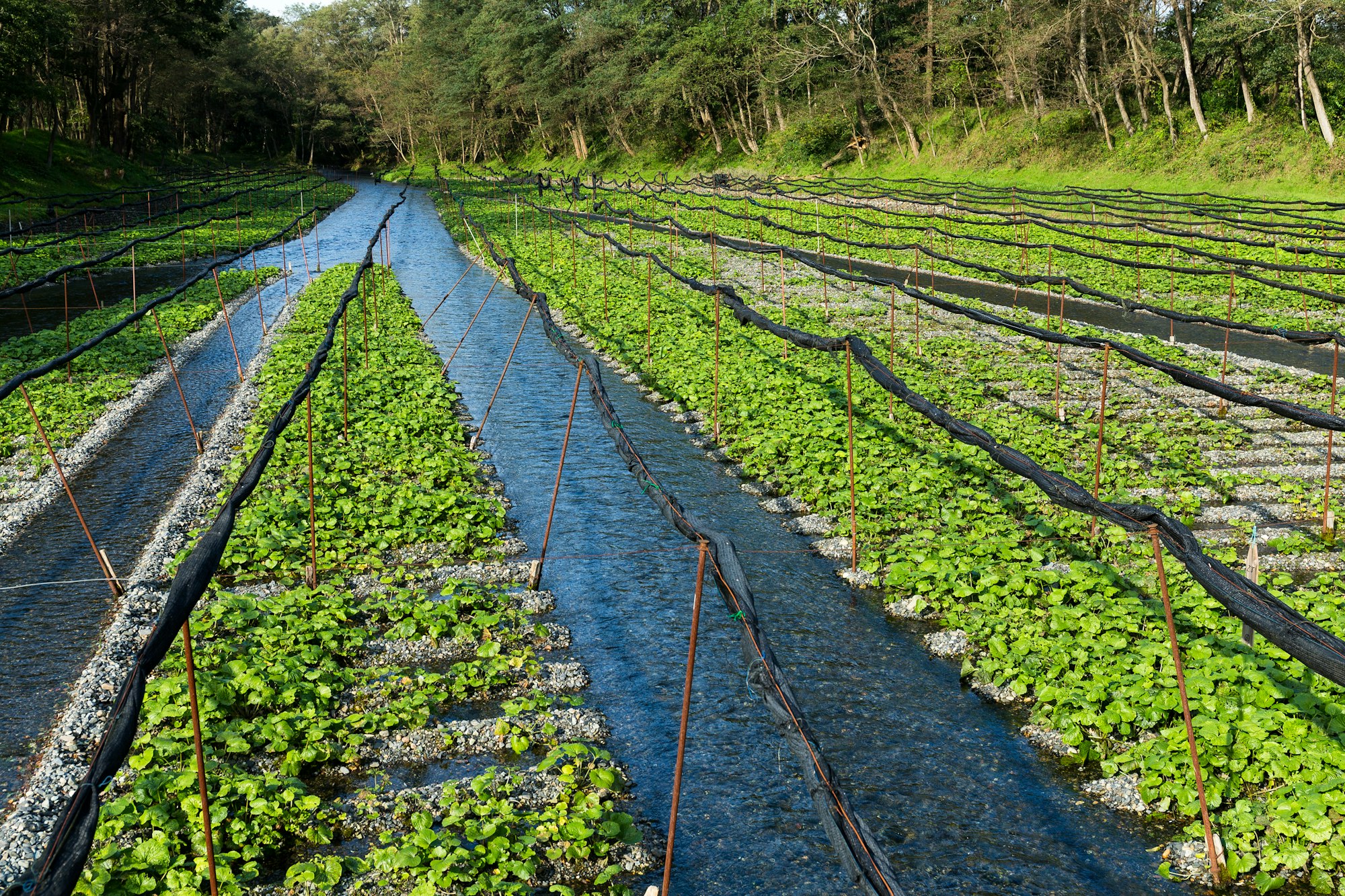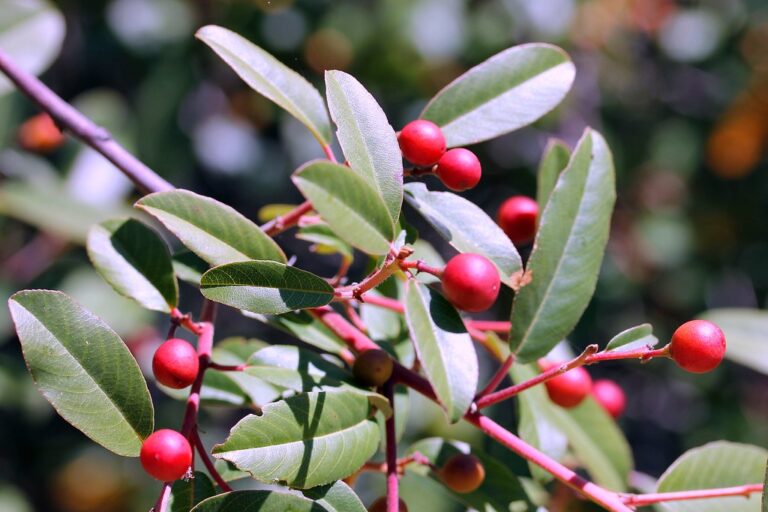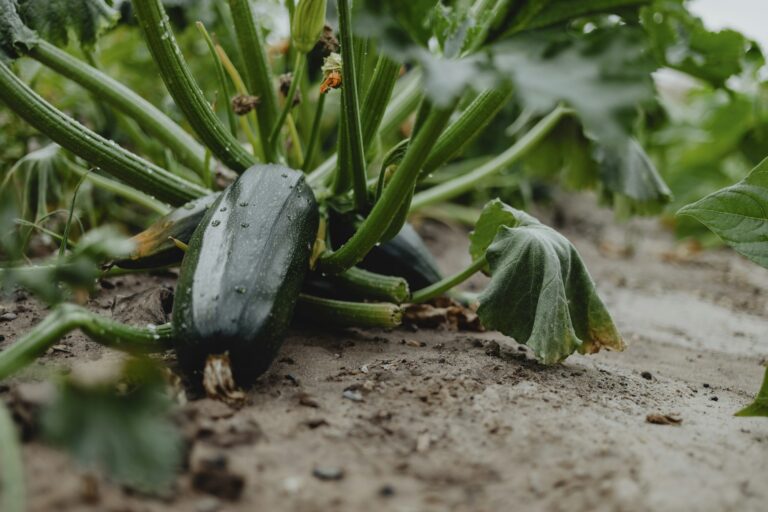How to Grow and Enjoy Fresh Wasabi: A Comprehensive Guide

Wasabi, the fiery green paste that accompanies sushi and other Japanese dishes, is a beloved condiment known for its unique flavor and sinus-clearing heat. While most of us are familiar with the wasabi served at restaurants, few have experienced the fresh, homegrown variety. Growing your own wasabi can be a rewarding and enjoyable experience, allowing you to enjoy the freshest possible product and explore its various culinary applications. In this guide, we’ll walk you through the process of growing and enjoying fresh wasabi.
Understanding Wasabi

Before we dive into the specifics of growing wasabi, let’s take a moment to understand what it is and where it comes from. Wasabi, scientifically known as Wasabia japonica, is a member of the Brassicaceae family, which includes mustard, horseradish, and cabbage. The plant is native to Japan, where it has been cultivated for centuries in the cool, shaded streams of mountain valleys.
The part of the wasabi plant that we consume is actually the rhizome, a thick, fleshy stem that grows underground. When grated, the rhizome releases a complex blend of volatile compounds, including allyl isothiocyanate, which gives wasabi its signature heat and pungency.
It’s worth noting that much of the “wasabi” served in restaurants and sold in stores is actually a mixture of horseradish, mustard, and green food coloring. True wasabi is quite rare and expensive, making it a prized ingredient among chefs and food enthusiasts.
Growing Conditions for Wasabi
To successfully grow wasabi, it’s essential to understand its preferred growing conditions. Wasabi is a slow-growing, semi-aquatic plant that thrives in cool, shaded environments with plenty of moisture.
Here are some key factors to consider when growing wasabi:
- Temperature: Wasabi prefers cool temperatures between 45°F and 70°F (7°C to 21°C). It can tolerate brief periods of warmer or colder weather but will suffer if exposed to extreme temperatures for extended periods.
- Light: Wasabi grows best in dappled shade, with about 70% to 80% shade coverage. Too much direct sunlight can scorch the leaves and stress the plant.
- Water: Consistent moisture is crucial for wasabi growth. The plant prefers a steady supply of cool, fresh water, ideally from a stream or spring. If growing wasabi in containers, ensure the soil remains evenly moist but not waterlogged.
- Soil: Wasabi thrives in well-draining, fertile soil rich in organic matter. A mix of compost, peat moss, and perlite or sand can provide the ideal growing medium.
- pH: Wasabi prefers slightly acidic soil with a pH between 6.0 and 7.0.
By replicating these natural growing conditions as closely as possible, you can create a suitable environment for your wasabi plants to thrive.
Propagating Wasabi
Wasabi can be propagated through seeds or rhizome cuttings. While growing from seed is possible, it can be a slow and challenging process. For most home gardeners, starting with rhizome cuttings is the easiest and most reliable method.
To propagate wasabi from rhizome cuttings:
- Obtain a healthy wasabi rhizome from a reputable supplier. Look for firm, plump rhizomes with no signs of damage or disease.
- Cut the rhizome into 2-3 inch (5-7.5 cm) sections, ensuring each piece has at least one visible growing bud or “eye.”
- Allow the cut ends to dry and callus over for a day or two before planting.
- Plant the rhizome sections horizontally, about 1 inch (2.5 cm) deep in prepared soil or growing medium.
- Keep the soil consistently moist but not saturated, and maintain cool, shaded conditions.
- Wasabi is a slow grower, so be patient. It can take several months for the first leaves to appear and 18-24 months for the rhizomes to reach harvestable size.
Caring for Wasabi Plants
Once your wasabi plants are established, they will require ongoing care and attention to thrive. Here are some essential tips for caring for your wasabi plants:
- Watering: Wasabi plants require consistent moisture, so water them regularly to keep the soil evenly moist. Avoid letting the soil dry out completely, as this can stress the plant and affect rhizome development.
- Fertilizing: Feed your wasabi plants with a balanced, organic fertilizer every 4-6 weeks during the growing season. Avoid over-fertilizing, as this can lead to leaf growth at the expense of rhizome development.
- Mulching: Apply a layer of organic mulch, such as straw or shredded leaves, around your wasabi plants to help retain moisture and suppress weed growth.
- Pest control: Wasabi is relatively resistant to pests and diseases, but it can occasionally be affected by aphids, slugs, or fungal issues. Regularly inspect your plants and address any problems promptly using organic methods.
- Shade management: Ensure your wasabi plants receive the appropriate level of shade throughout the growing season. If necessary, adjust shade cloth or other shading structures to maintain the ideal 70-80% shade coverage.
By providing your wasabi plants with the proper care and attention, you can encourage healthy growth and maximize rhizome development for a bountiful harvest.
Harvesting and Storing Wasabi
Wasabi is typically ready to harvest after 18-24 months of growth, when the rhizomes have reached their mature size. Here’s how to harvest and store your homegrown wasabi:
- Gently dig around the base of the plant to expose the rhizome, taking care not to damage the delicate roots.
- Lift the entire plant from the soil, shaking off any excess dirt.
- Trim off the leaves and rootlets, leaving just the clean rhizome.
- Rinse the rhizome thoroughly under cool running water to remove any remaining dirt.
- Pat the rhizome dry with a clean towel.
- If not using immediately, store the rhizome in a plastic bag in the refrigerator. Fresh wasabi will keep for several weeks when properly stored.
When you’re ready to use your fresh wasabi, simply grate the rhizome using a fine grater or specialized wasabi grater. The heat and flavor of wasabi are at their peak immediately after grating, so it’s best to prepare it just before serving.
Enjoying Fresh Wasabi
Now that you’ve successfully grown and harvested your own fresh wasabi, it’s time to explore its many culinary applications. While wasabi is most commonly associated with sushi and sashimi, it can be used in a variety of dishes to add heat, flavor, and nutritional benefits.
Here are some ideas for enjoying your fresh wasabi:
- Traditional accompaniment: Serve grated wasabi alongside sushi, sashimi, or other raw fish dishes.
- Condiments: Mix grated wasabi into mayonnaise, aioli, or sour cream for a spicy sandwich spread or dip.
- Salad dressings: Whisk grated wasabi into your favorite salad dressing for an extra kick.
- Marinades and glazes: Incorporate wasabi into marinades or glazes for grilled meats, fish, or vegetables.
- Soups and stews: Add a small amount of grated wasabi to miso soup, ramen, or other brothy dishes for a subtle heat and unique flavor.
- Cocktails: Muddle fresh wasabi into cocktails like Bloody Marys or martinis for a spicy twist.
In addition to its bold flavor, wasabi offers numerous health benefits. It contains compounds called isothiocyanates, which have been shown to have anti-inflammatory, antimicrobial, and potentially cancer-preventive properties. Incorporating fresh wasabi into your diet may provide a tasty way to boost your overall health and well-being.
Conclusion
Growing and enjoying fresh wasabi can be a rewarding and delicious experience for any home gardener or food enthusiast. By understanding the plant’s unique growing requirements and providing the proper care and attention, you can successfully cultivate your own supply of this prized ingredient.
Whether you use it in traditional Japanese cuisine or explore new culinary applications, fresh wasabi is sure to add a memorable kick to your dishes. So why not give wasabi growing a try? With patience and dedication, you could be grating your own homegrown wasabi in no time!



